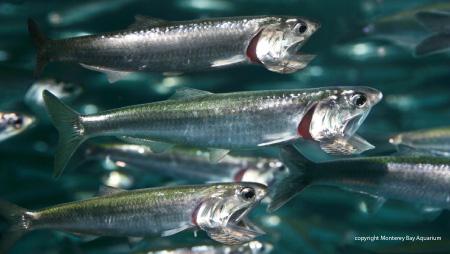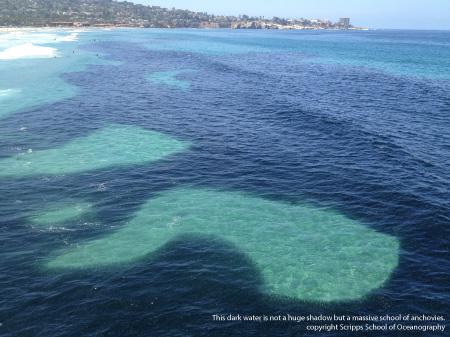Where we at Shape of Life live, we know when anchovies are in the neighborhood because when we go down to the ocean, we’ll see hundreds of diving sea birds, jumping sea lions, and if we’re lucky, humpback whales. They’re all here to feed on massive schools of anchovies close to shore. As they swim through the water with their mouths open, anchovies strain out plant and animal plankton. They then are food to all of the animals we see plus so many more, including larger fish and people. In fact, these small schooling fish (@nine inches long) support a large part of the oceanic food web. Some scientists say anchovies are the most important prey—also called forage fish—in the U.S. Pacific Ocean. Anchovies are a good choice for our diets as well. Eating fish low on the food chain, like anchovies, is a good choice as these fish have shorter life spans and reproduce more quickly making them resilient to fishing pressure. In addition they have fewer toxins than larger fish.
Open water fish like anchovy travel in large schools for protection. An individual fish is less likely to be preyed on in a big group than if it’s swimming alone. Sometimes the schools will even be a mix of anchovies and sardines.
Fishermen use sonar to find these huge aggregations and scientists use sonar to estimate numbers. Recently, researchers like our Featured Scientist, Dr. Kelly Benoit-Bird, are using sonar to study how these schools move up and down in the water column, and from inshore to offshore each day. Dr. Benoit-Bird has found that the anchovies school at daybreak and disperse at night to avoid predators. Understanding how these important prey fish move helps scientists better understand the entire ocean ecosystem.
Read more about the importance of anchovies to the Pacific food web
Dive into a huge school of anchovies

















